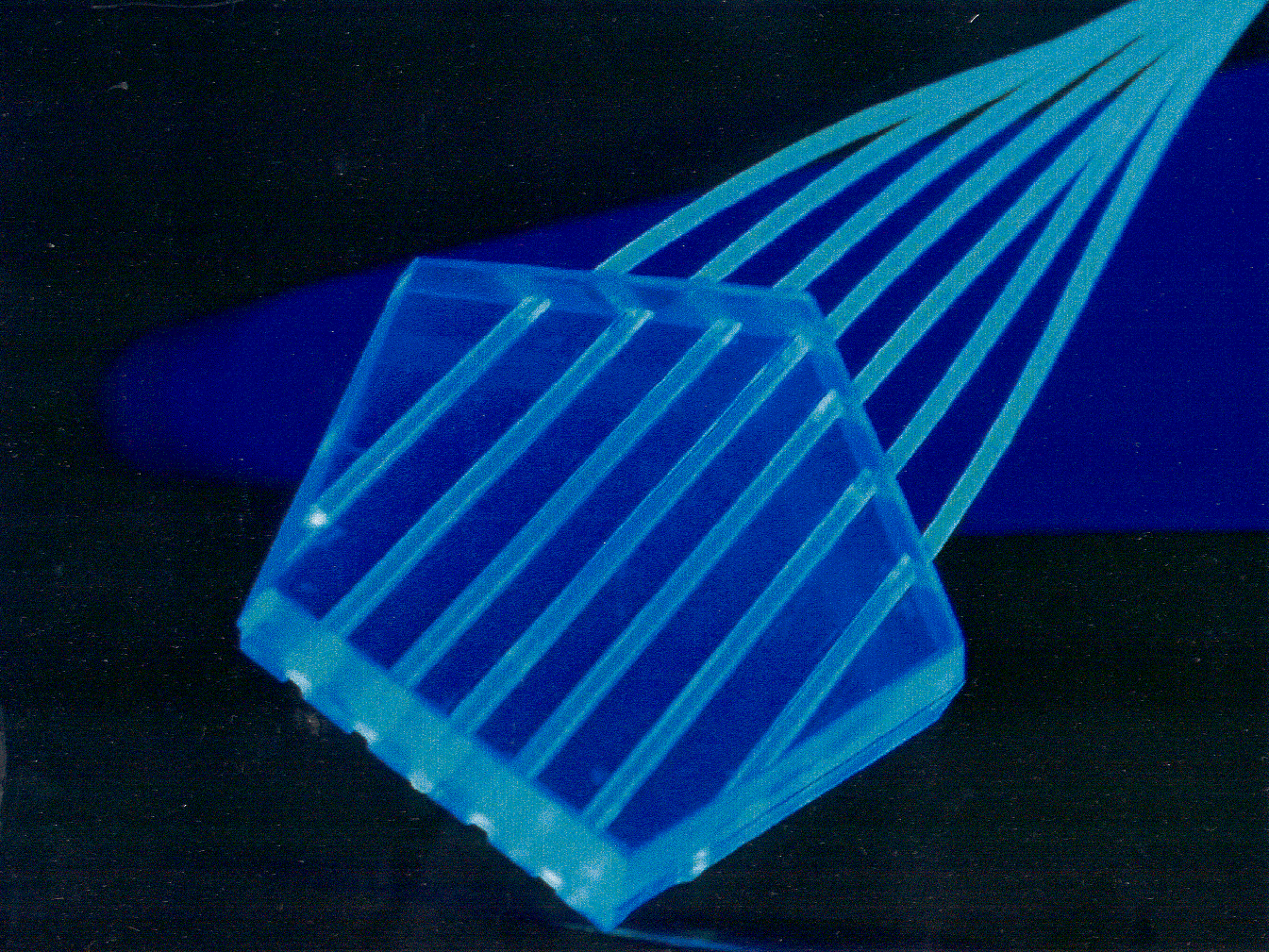 |
 |
Plastic Scintillators are more common than one might think. This photo shows a prototype for a detector used for precision spectroscopic measurements in nuclear physics, but many toluene-based plastics including some 'invisible tapes' will scintillate, or glow, too. A plastic scintillator detects charged particles, emitting photons of light when electrons around certain nuclei are excited and then fall back. Another method of excitation is by shining light of proper wavelength on the plastic - UV light at the proper wavelength will excite electrons, so using blue lights or sunlight can get plastic scintillators to glow (generally a faint purple colour).
The prototype shown here has edge length of less than 2 cm. The edges of the scintillator are tapered, and a wedge shaped piece of lucite is attached to the back to meet spatial constraints in the detector. The fibres are scinitillators, too absorbing light and re-emitting at a green wavelength. In order to cover a 4Pi solid angle there would be 20 hexagons and 12 pentagons(all like the one shown). These detectors will detect positrons (anti-matter electrons) at the ISAC facility at TRIUMP, and will be used in conjunction with a number of gamma-ray detectors.